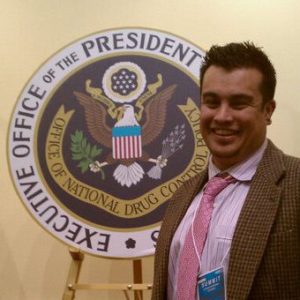The Comprehensive Addiction and Recovery Act (CARA) is a bill to authorize the Attorney General to award grants to address the national epidemics of prescription opioid abuse and heroin use in America. It has recently passed the SENATE and is now the way to the HOUSE, if passing the HOUSE the BILL will need to be signed by President Obama. CARA is the most expansive federal bipartisan legislation to date for addiction support services. The BILL is pushing up to $80 million toward advancing treatment and recovery support services in state and local communities across the nation. Overdoses from opioid painkillers and heroin addiction beat out car accidents as the leading cause of injury-related deaths in America, with 47,055 lethal drug overdoses in 2014. Deaths have reached their highest levels on the 21st century and Heroin overdoses have more than tripled in the last five years, an issue receiving nation media attention. Opioid addiction is driving this epidemic, with 18,893 overdose deaths related to prescription pain relievers, and 10,574 overdose deaths related to heroin in 2014. America is dealing with a serious problem when we talk about the drug epidemic involving heroin addiction, opioid addiction, and other drugs.

Trainer, Consultant and Expert on Peer Recovery Support Services, President and Founding member at Recoveryatx
Joseph Sanchez the Co-Founder of RecoveryATX and Subject matter expert spoke about the Comprehensive Addiction and Recovery Act.
“It will change the landscape of services for those in and seeking recovery. The conversations around CARA have given recovery more visibility and the recovery movement more momentum. We know that recovery is possible and through CARA we are able to increase the span and duration of services to truly support those living with the chronic disease of addiction.”
What’s the plan? Here is a brief summary of what CARA is about.
Brief Summary of Provisions of CARA
- Provide up to $80 million in funding for prevention, treatment, and recovery
- Expand prevention and educational efforts—particularly aimed at teens, parents and other caretakers, and aging populations—to prevent the abuse of opioids and heroin and to promote treatment and recovery.
- Expand the availability of naloxone to law enforcement agencies and other first responders to help in the reversal of overdoses to save lives.
- Expand resources to identify and treat incarcerated individuals suffering from addiction disorders promptly by collaborating with criminal justice stakeholders and by providing evidence-based treatment.
- Expand disposal sites for unwanted prescription medications to keep them out of the hands of our children and adolescents.
- Launch an evidence-based opioid and heroin treatment and intervention program to expand best practices throughout the country.
- Launch a medication assisted treatment and intervention demonstration program.
- Strengthen prescription drug monitoring programs to help states monitor and track prescription drug diversion and to help at-risk individuals access services.
- Expand recovery support for students in high school or enrolled in institutions of higher learning
- Expand and develop community-based recovery services in communities across the country

Recent Comments